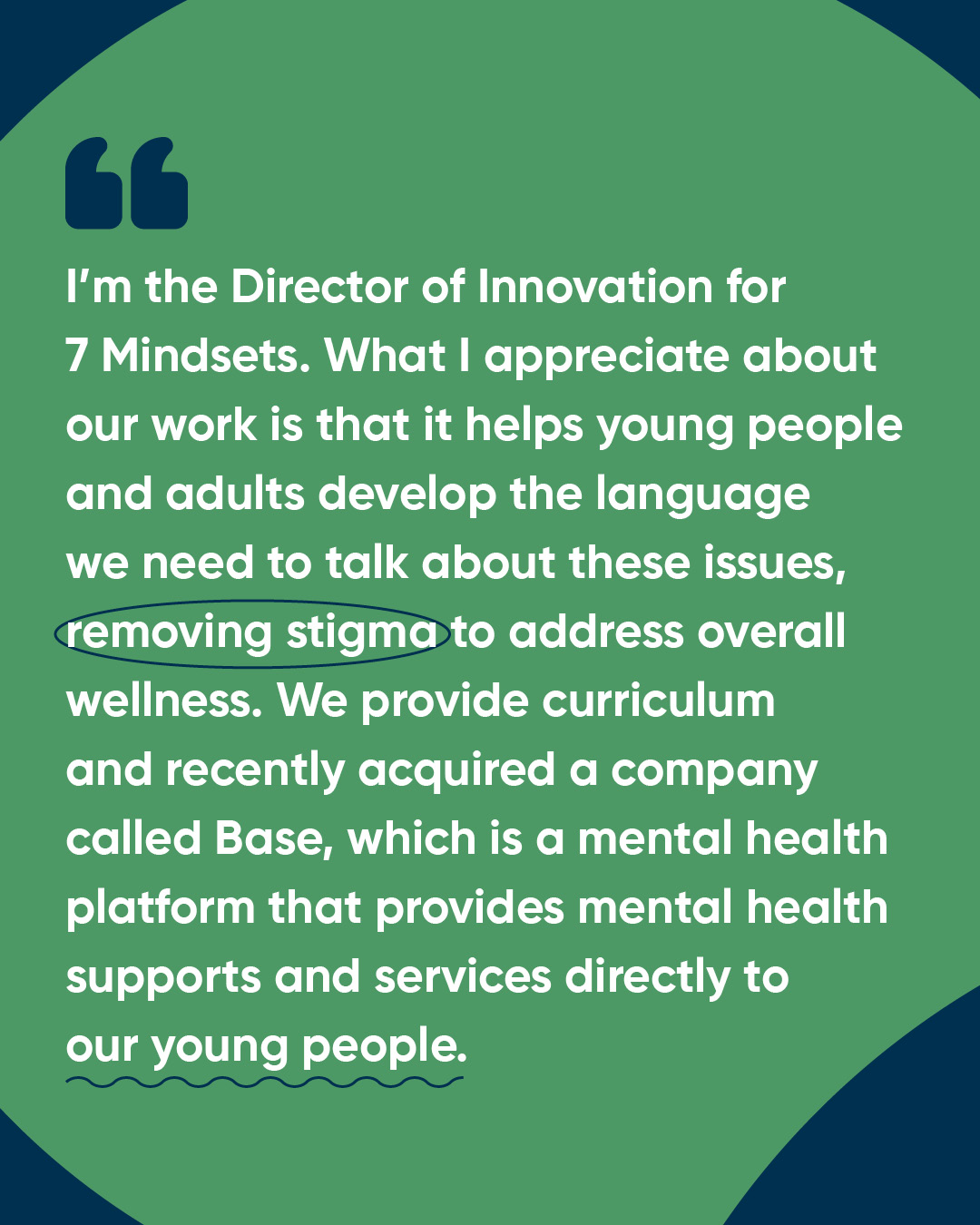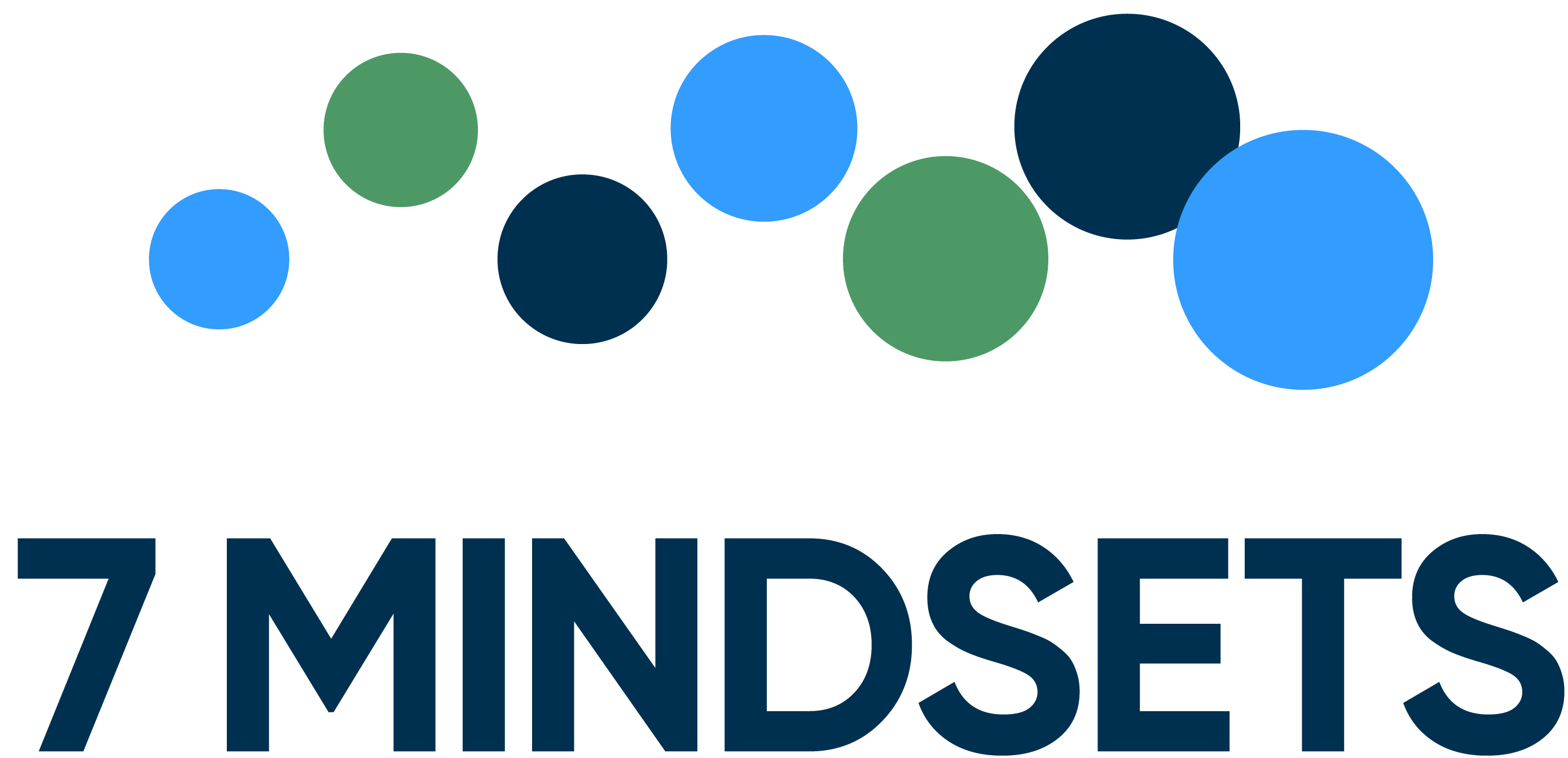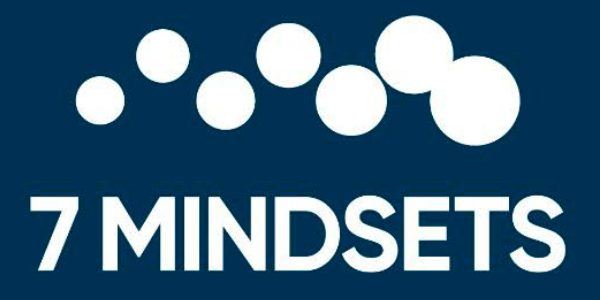Dr. Byron McClure, Director of Innovation for 7 Mindsets and founder of Lessons for SEL, was recently interviewed for a RollingOut.com about proactive mental health support for young people. In the article, Dr. McClure discusses the importance of mental wellness, the role culture plays in wellness and mental health, and how schools and educators can better support the emotional wellness of their students. The full article, originally published August 14, 2025, on RollingOut.com, is available below.
Dr. Byron McClure on Cultural Approaches to Mental Health
School psychologist champions proactive mental wellness through culturally responsive education approach
By Porsha Monique | RollingOut.com
When Dr. Byron McClure began working as a school psychologist in Southeast D.C., he witnessed how traditional approaches to student mental health often failed the communities that needed them most. Too many young people, particularly African American boys, were caught in cycles of punitive discipline rather than receiving the support they needed to thrive.
Now, as Director of Innovation at 7 Mindsets, McClure has spent more than a decade transforming that narrative. The nationally certified school psychologist has pioneered culturally affirming, evidence-based strategies that shift focus from “what’s wrong” to “what’s strong,” helping students develop social-emotional skills necessary for success.
As National Wellness Month highlights the critical importance of mental health, McClure’s insights offer a roadmap for proactive wellness that extends beyond traditional deficit-based models. Through 7 Mindsets’ curriculum and platforms like myMQ, he’s ensuring that mental health support reaches young people before they reach crisis points.
Why is National Wellness Month important, especially in today’s cultural climate?
Every time is the right time to talk about wellness, especially when it comes to historically marginalized communities, but especially now because our students, our staff, our school communities are about to return back to school. It serves as the perfect time to center wellness for our young people.
It gives everyone permission to slow down, to take a second and check in with themselves and check in with those around them. So often we don’t take the time just to say, “Hey, how are you doing — for real?” By recognizing National Wellness Month, we can deliberately make that time to check in with one another.
I really appreciate wellness because so often we focus on illness, we focus on deficit. By focusing on wellness, we can prioritize what’s right, what’s working, and how we can build in protective factors so that we can move to a place of thriving and really enjoying life.
 How do you define mental wellness beyond the absence of mental illness?
How do you define mental wellness beyond the absence of mental illness?
To me, it’s having protective factors, resources, and support. I like to use this acronym — PERM. It’s positive emotions, engagement, relationship skills, meaning (the sense of mattering), and having a sense of accomplishment. Dr. Martin Seligman and his team, great researchers out of UPenn in positive psychology, developed this model of well-being.
Wellness is the presence of those things. Without them, you’re just at a state of homeostasis — you’re just existing. I believe that life is so much more than that. Are you going around Detroit? Are you enjoying your relationships with those around you? Do you have meaning in the work that you do? Do you have a sense of accomplishment where you can look back on your life and say, “I lived a life that has been worth living?”
You focus heavily on culturally affirming social-emotional learning. How does culture play a role in wellness and mental health?
The absence of cultural context might actually pose harm to people. If you don’t consider a person’s culture, where they’re from, their history, you might implement certain practices that can be counter to their survival, to actually moving them on a path to wellness.
Where I’m from, community is super important—that interconnectedness with others. We might live in a dominant society that focuses on individualism, but one of the mindsets is “we are connected.” For a Black kid growing up, having this sense of community is super important. If that culture isn’t considered in a therapeutic process, that might be ignored.
People don’t see therapists who look like them, who understand, who can say, “Hey, I understand that you live in a food desert and you might not have access to these things.” What has happened is people will make recommendations that will actually cause harm or prevent people from seeking out the therapeutic services that they desperately need in the first place.
What are some of the biggest misconceptions and stigmas you’ve encountered when it comes to mental health in Black and Brown communities?
One of my first introductions to mental health was those stigmas preventing a really good friend of mine from seeking out therapeutic support. I was in 10th grade, and my friend — who was the president of SGA, the popular kid, had everything going on for him — made a split-second choice and caused harm to himself.
I didn’t understand it. It didn’t make sense to me. Talking to him, he said, “I can’t tell people what I’m experiencing. I can’t talk about these issues. I’m supposed to put on this mask.” As an adult, I have the language now — he was putting on a mask to make it seem like he had everything together.
That stigma will silence you. That stigma will make you feel isolated, make you dive deeper and deeper into your own thoughts, and if you don’t have a way to get that out, unhealthy things can happen. We have to reduce and remove the stigma around this so we can remove as many barriers as possible so that our young people can get the help that they need.
How can schools and educators better support the emotional wellness of students, especially in high-poverty areas?
First, adults have to make sure that we have the supports and resources to address ourselves. You can’t pour from an empty cup. Then inside of schools, I am really big on having a systematic way to get the help and support that you need.
That means building in the right mindsets, healthy habits, and cultivating protective factors — helping our young people develop healthy identity, self-esteem, strengthening family social supports, having a trusted adult, spirituality, positive relationships, making sure our young people have access to resources like extracurricular activities, and using therapy as a proactive strategy instead of waiting until you’re in the emergency room.
Tell us about 7 Mindsets. What are the services you offer?
I’m the Director of Innovation for 7 Mindsets. What I appreciate about our work is that it helps young people and adults develop the language we need to talk about these issues, removing stigma to address overall wellness. We provide curriculum and recently acquired a company called Base, which is a mental health platform that provides mental health supports and services directly to our young people.
We’re rolling out a student-led 7 Mindsets club. The way it starts is with a district or school making the decision to bring on 7 Mindsets. Then you become a 7 Mindsets school. We have an exceptional team that works in partnership with the school to implement the 7 Mindsets across all grade levels K through 12 in a systematic way.
 What are the 7 Mindsets exactly?
What are the 7 Mindsets exactly?
The 7 Mindsets are the language that we need, which is super important for young people to be able to talk about the things they encounter in life every single day:
- Everything is possible — providing hope to young people
- Passion first — understanding things that make life worth living
- We are connected — finding common connections with people around you
- 100% accountable — taking ownership and control over your life
- Attitude of gratitude — being grateful for things that you have and practicing it every day
- Live to give
- The time is now
What message do you want most to resonate during National Wellness Month?
I want people to know that at times it’s okay not to be okay. That doesn’t mean you’re weak or alone. It means you’re human.
I also want people to know that there is clear evidence of what we can do to improve the well-being of young people and adults. That means we have a clear path forward — we can move from being reactive to proactive strategies, intentionally teaching our young people the right mindsets.
This means moving away from deficit-based approaches to strength-based approaches. Instead of seeing the worst in people, being able to see a holistic approach, prioritizing protective factors, and
moving from a space of isolation to being fully integrated — having mental wellness integrated across all aspects of life.




